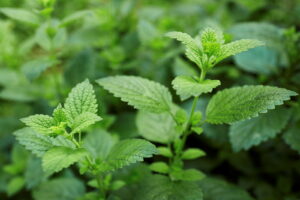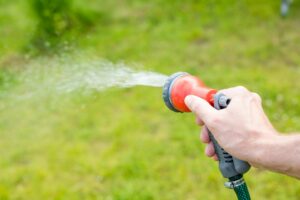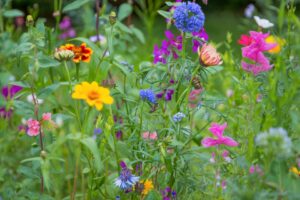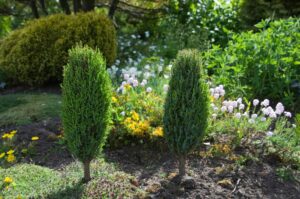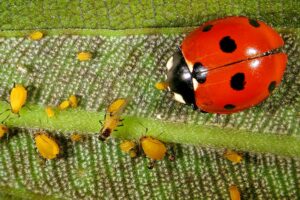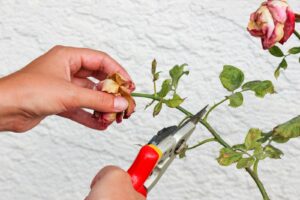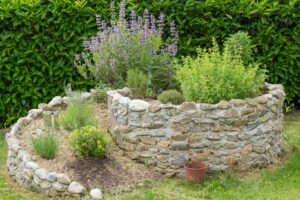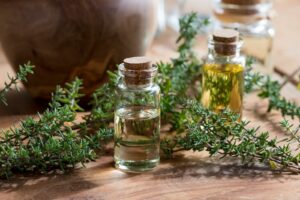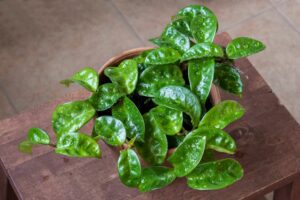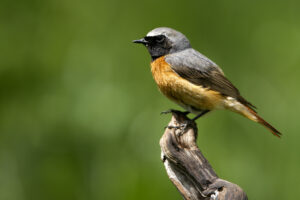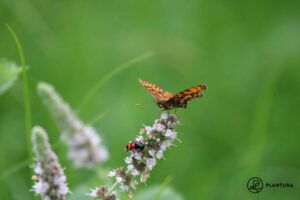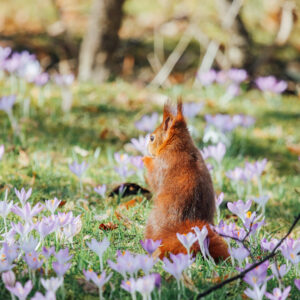Wire netting bush: care, location & overwintering
The wire netting bush is suitable as an indoor plant, for outside on the balcony or planted out for the garden. This New Zealand plant has a special growth habit and features impressive yellow flowers and red fruits.

The wire netting bush (Corokia cotoneaster) is a versatile plant that is fairly easy to care for. However, it is only conditionally hardy here – and usually requires winter protection. Find out here where the shrub comes from and what other species the genus corokia has in store for us. We also explain which location is well suited to the wire netting bush and what to bear in mind when caring for it.
Contents
Wire netting bush: origin and characteristics
The wire netting bush Corokia cotoneaster is part of the family Argophyllaceae and belongs to the genus Corokia along with 9 other species. It is known as the wire netting bush. It originates from New Zealand, where it grows on rocky terrain at higher altitudes. The genus name Corokia is a Maori name and the species name cotoneaster means “similar to the quince”. Its spreading, bushy branches are silvery when young, covered with silky hairs and turn dark brown with age. They grow in a bizarre zigzag shape and have small, egg-shaped leaves. In New Zealand, the evergreen deciduous shrub can grow up to 3 metres high – here it only reaches a maximum of 2 metres.
The wire netting bush can be planted out as a shrub in the garden, grown in a pot on the balcony and also used as a houseplant – it can even be grown as a bonsai.
In our latitudes, the wire netting bush forms yellow, star-shaped flowers in the leaf axils from April to June, which turn into red or yellowish, decorative fruits after pollination. The bright yellow flowers exude a pleasant fragrance and are bee-friendly. However, the wire netting bush cannot pollinate itself, so two specimens are needed to set fruit.

More beautiful species of Corokia
Apart from the best-known species Corokia cotoneaster there are several other species of the genus Corokiaoriginating from New Zealand, Australia and surrounding islands.
Corokia buddleiodes: This species is the least hardy of the genus Corokia, being hardy only down to – 5 °C. The upright-growing variety has glossy dark green leaves with a light underside. It flowers in spring, its fruits are spherical and black-red.

Corokia macrocarpa: This species is somewhat more robust than Corokia buddleiodes, it is hardy down to -10 °C. It grows upright and has lanceolate, grey-green leaves with a silvery underside. It produces yellow flowers in late spring, followed by egg-shaped, red fruits.
Corokia x virgata: It is a cross between Corokia cotoneaster and Corokia buddleiodes and is hardy down to -10 °C. It forms fragrant, yellow flowers and its fruits turn yellow, red or orange. There are a few varieties of this hybrid species to admire:
- ‘Coppershine’: Its evergreen foliage is bronze in winter and it has a sparse, loose and upright habit.
- ‘Frosted Chocolate’: This variety, whose large leaves, up to 4 cm long, are characteristic and larger than those of other varieties, is also bronze-coloured in winter.
- ‘Red Wonder’: It is green-leaved in winter, grows large and is characterised by leathery foliage and red berries.
- ‘Yellow Wonder’: This variety has olive-coloured leaves even in winter. It is elegant and tall growing with yellow fruits.
- ‘Sun Splash’: While growing low, the small, spoon-shaped leaves of this variety are adorned with an irregular, yellow variegation.

Planting wire netting bush
The wire netting bush is a robust plant that is a real eye-catcher both in a bed and in a pot – outdoors or indoors as a houseplant. If you put the shrub outside in a pot for the flowering period at the right temperatures, it can flower vigorously and bees use the flowers as a food source.
The right location
The wire netting bush thrives best in a full sun or partial sun location. It does not make any special demands on its substrate – however, a loamy, humus-rich soil with a neutral to slightly acidic pH contributes to its health. If these conditions are not met, the substrate can be improved with suitable potting soil, which can also be used in pots. Our peat-free Plantura Organic Flower Compost, for example, is suitable for this purpose. In addition to quality compost, it contains coconut and wood fibres and crushed expanded clay, which makes the substrate well permeable. Whether in a pot or in a bed – the robust shrub needs a sheltered spot or a location indoors where it is not exposed to draughts. It also needs high humidity and an ambient temperature between 16 and 22 °C. In winter, temperatures should not be far below 0 °C.
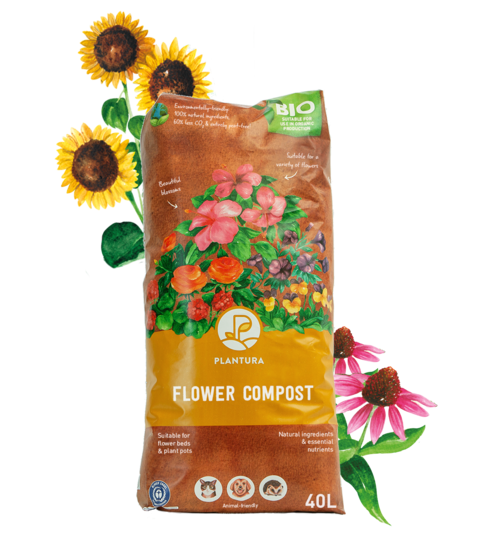
- Perfect for all flowering plants in garden beds & pots
- For beautiful blossoms & healthy plant growth
- Peat-free & organic soil: CO2-saving composition
Tip: You can also let your wire netting bush grow decoratively against the wall or use it as a hedge. The wire netting bush is very tolerant of pruning.
Instructions for planting
The best time to plant the wire netting bush in the garden is in mid-May after the Ice Saints. To enrich the planting substrate with nutrients, it is advisable to mix in about a fifth of ready-made compost or planting soil. If the soil is very clayey or compacted, it is best to add about one fifth of drainage material such as gravel, sand or expanded clay to the soil.
Here’s how to go about planting in the garden:
- Dig a planting hole approximately twice the size of the root ball of the wire netting bush
- Mix compost or planting soil and, if necessary, sand and gravel into the excavated soil
- Place wire netting bush in the planting hole – at a height where the leaves do not touch the ground
- Spread the excavated soil around the plant ball
- Press soil around the wire netting bush
- Water well

If you plant the wire netting bush in a pot, you can proceed in the same way. The requirements for the substrate are the same: For example, our peat-free Plantura Organic Flower Compost is suitable. You should make sure that the pot is at least twice as big as the plant ball and has a drainage hole. It is therefore essential to add a drainage layer to the bottom of the pot. This can consist of gravel or expanded clay, for example, and prevents waterlogging.
Caring for wire netting bushes
The demands of the robust wire netting bush are easily satisfied with a little care.
Watering, fertilising and pruning
Corokia cotoneaster grows best in moderately moist substrate. Accordingly, it is always time to water when the substrate has dried but is not yet fully dried out. At that point it is best to give small amounts of low-lime water. If the wire netting bush is used as an indoor plant, you can spray it with a little lime-free water, especially in summer, to keep the humidity high.
Pruning the wire netting bush is usually not necessary, but it is also not a problem. It retains its whimsical zigzag shape best when not cut. Pruning gives a more compact growth, as branching is stimulated by pruning. The best time to do this is right after the flowering period. Never cut off more than a third of the plant. Withered flowers can always be cut off without hesitation. Corokia can also be pruned as a topiary.

If the wire netting bush is planted in a pot, it needs some attention. In its first 3 years of life, it should be repotted annually – and because of the new substrate, no fertiliser is needed. When repotting, the old drainage material may be reused. It is only advisable to take it out once and clean it a little. When the pot is fully rooted, the wire netting bush should of course be provided with fresh substrate. After the first 3 years, it no longer needs to be repotted annually, but only every 3 to 4 years. Then it should be fertilised once a month between April and September with a suitable liquid fertiliser. Our organic Plantura Liquid Flower Food is recommended for this purpose. In addition to the important nutrients, this contains microorganisms that promote root growth and thus make the plant more resistant. It is important not to fertilise during the flowering period – this could cause the flowers to be rejected.

- Perfect for all flowers & balcony plants
- Liquid fertiliser for a lush blossom throughout the season
- Quick & easy application - child & pet friendly
If the wire netting bush has been planted outdoors, then – depending on the existing soil fertility – the shrub needs a fertiliser application with an organic granulate fertiliser no more than once a year. Use this in spring, around February or March. This way, the nutrients are already available to the shrub at the start of growth.
Tip: The wire netting bush is ideal for growing into a bonsai. For this, the roots are shortened by a third once a year. This can also be combined well with annual repotting in the first 3 years. After this initial period, however, the roots still need to be pruned annually.
Care problems: diseases, withered wire netting bush etc.
The wire netting bush is generally unaffected by disease – if it loses leaves or they discolour, the cause is usually an error in its care. In the pot, Corokia is clearly more often affected by these problems. Below you will find the most common symptoms and their treatment.
Root rot
- The wire netting bush loses foliage
- Its leaves droop and discolour, buds fall off, flowers wilt prematurely
If you notice these symptoms, the wire netting bush has probably been overwatered. Accordingly, it is best to plant the plant out immediately and remove as much of the wet soil as possible. You can cut off particularly brittle, soft or even mouldy roots and then leave the root ball to dry for about 24 hours. Then replant the wire netting bush as described above and start watering lightly again after two days.

Stem rot
- Same symptoms as root rot
- Trunk soft and branches less stable
Here, too, the wire netting bush was overwatered and attacked by fungi. This means that the same measures as for root rot can be carried out. In addition, the trunk and branches should be shortened generously. However, it is also possible that the shrub will not survive the stem rot. This is because woody plants do not have an immune system in the same sense and can often no longer offer much resistance to pathogens that have already invaded.
Dried out wire netting bush
When the wire netting bush has dried out, it is usually difficult to bring it back to life. You can use a pair of rose shears to check whether anything at all can still be saved: if you cannot find any green cambium left in any cutting, then all your efforts are in vain. If there are still living shoots, however, you can try to save it with the following method: Fill a bucket with water and put the dry wire netting bush in it for a few minutes. Let the remaining liquid drain off and then remove withered shoots and leaves. After potting, the shrub should be placed protected from the wind and in the shade, preferably in a room at room temperature.
Is the wire netting bush hardy?
Corokia cotoneaster is not usually hardy in this country. In the short term it survives temperatures of around -7 °C, but these should not last longer than 3 days. To overwinter the wire netting bush, bring it into a 5 to 10 °C warm, bright room. Direct sunlight should be avoided. Unheated conservatories, bright garages or hallways are well suited for this. Make sure it is not too warm – cool temperatures below 10 °C are needed between November and March so that the wire netting bush will sprout again in spring. In addition, humidity should be at least 30 % and the winter quarters should be ventilated occasionally. In winter, little watering and no fertiliser should be applied.

Propagation
The wire netting bush is best propagated by semi-ripe cuttings from late summer to mid autumn. Proceed as follows:
- First cut off a young, 10 -20 cm long shoot. It should be neither green and soft, nor hard and woody – these are called semi-mature cuttings.
- Remove the lowest leaves and make a strongly angled cut at the base of the cutting.
- The cutting area should be placed at least 3 cm below the soil.
- For this, we recommend using growing soil such as our peat-free Plantura Organic Herb & Seedling Compost.

- Perfect for herbs as well as sowing, propagating & transplanting
- For aromatic herbs & healthy seedlings with strong roots
- Peat-free & organic soil: CO2-saving composition
- Press the soil lightly and spray it with water so that it is well moist.
- Then place the cutting in a light, not full sun location and always keep it slightly moist. A room temperature of 15 °C is optimal.
- When new leaves emerge, you can transplant the cutting.

Are wire netting bushes poisonous?
No, the wire netting bush is not poisonous. There are no known cases of poisoning, neither for pets nor for children. However, eating the ornamental plant does not bring any benefit and should be avoided as a precaution.


